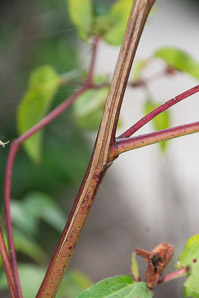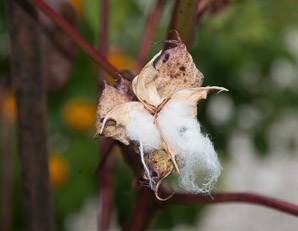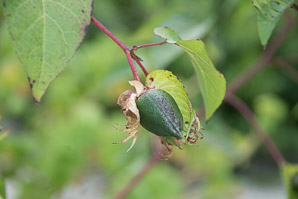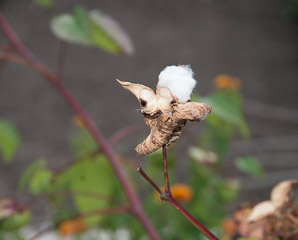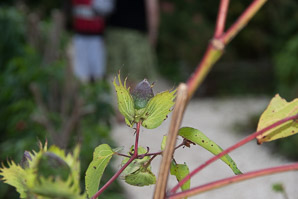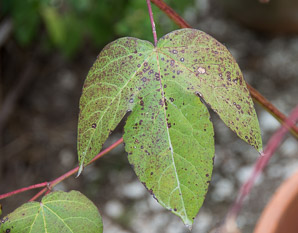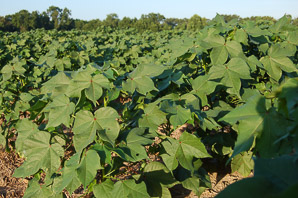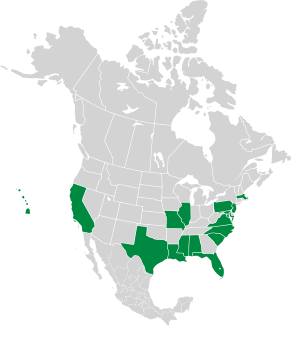
|
Gossypium hirsutum L. Cotton, upland cotton
This variety of cotton is native to Mexico, the West Indies, northern South America, Central America, and maybe southern Florida. It is by far the most popular species of cotton used for commerical cotton production in the United States—many cultivars have been created from it. Plants: Annual subshrubs, up to 5′ (1.5 m) tall. Some branches fruit, while others do not. Leaves: Alternate, on petioles (leaf stems), Cordate (heart-shaped), up to 3-6″ (7.5-15 cm) in width, somewhat wider than long, divided into 3-5 lobes, with smooth edges. Flowers: Flowers are white to yellowish, 5-petaled, and up to 3½″ (8.9 cm) across, occurring singly or in groups of 6-8. Some have a prominent maroon spot at the base of each petal. Some are pink (cultivars?). All have a large number of stamens, around 100, in the center. The flower shape is reminiscent of wild roses. Fruits: Cotton balls are fibrous trichomes surrounding seed capsules. Trichomes, from the Greek τρίχωμα (trikhōma) meaning "hair", are fine outgrowths or appendages. The tufts are 1-1¾″ (3-5 cm) around. The seed capsule within has 3-5 cells. It is globose to broadly ovoid, beaked, ⅞-1¼″ (2.5-3.5 cm) long, white to reddish brown, and smooth. Each cell contains 5-11 seeds. Edibility: Poisonous Online References:
Purdue University's Center for New Crops and Plants Products HEAR: the Hawaiian Ecosystems at Risk project 9/1/2013 · Colonial Williamsburg, Williamsburg, Virginia · ≈ 4 × 7″ (11 × 16 cm) 9/1/2013 · Colonial Williamsburg, Williamsburg, Virginia · ≈ 5 × 3″ (12 × 8.5 cm)
Gossypium hirsutum description by Thomas H. Kent, last updated 25 May 2020. © FloraFinder.org. All rights reserved. |
9/1/2013 · Colonial Williamsburg, Williamsburg, Virginia · ≈ 9 × 6″ (22 × 15 cm) 9/1/2013 · Colonial Williamsburg, Williamsburg, Virginia · ≈ 12 × 8″ (31 × 21 cm) 9/1/2013 · Colonial Williamsburg, Williamsburg, Virginia · ≈ 16 × 10″ (39 × 26 cm) 9/1/2013 · Colonial Williamsburg, Williamsburg, Virginia · ≈ 12 × 8″ (29 × 19 cm) Range:
|
